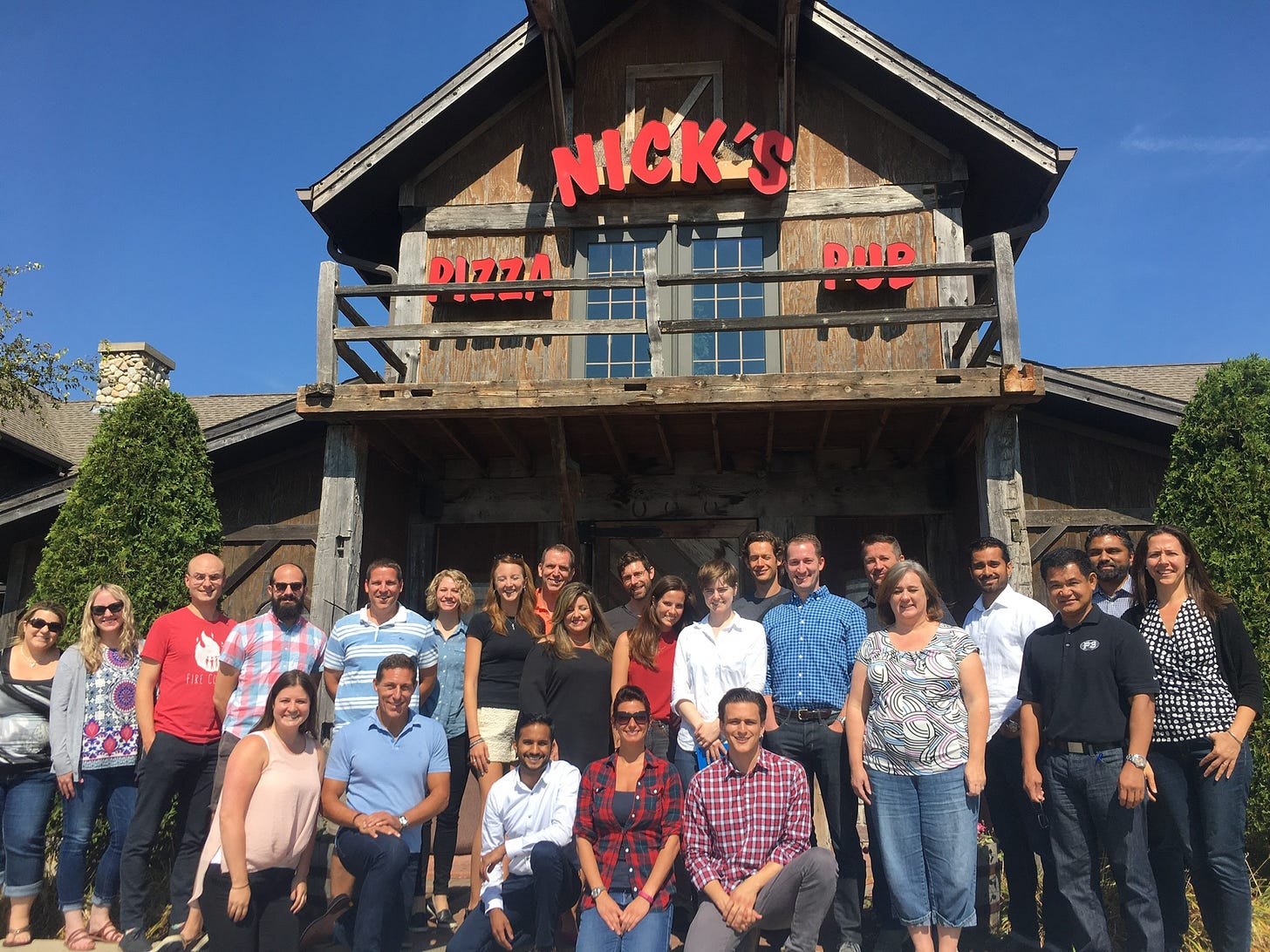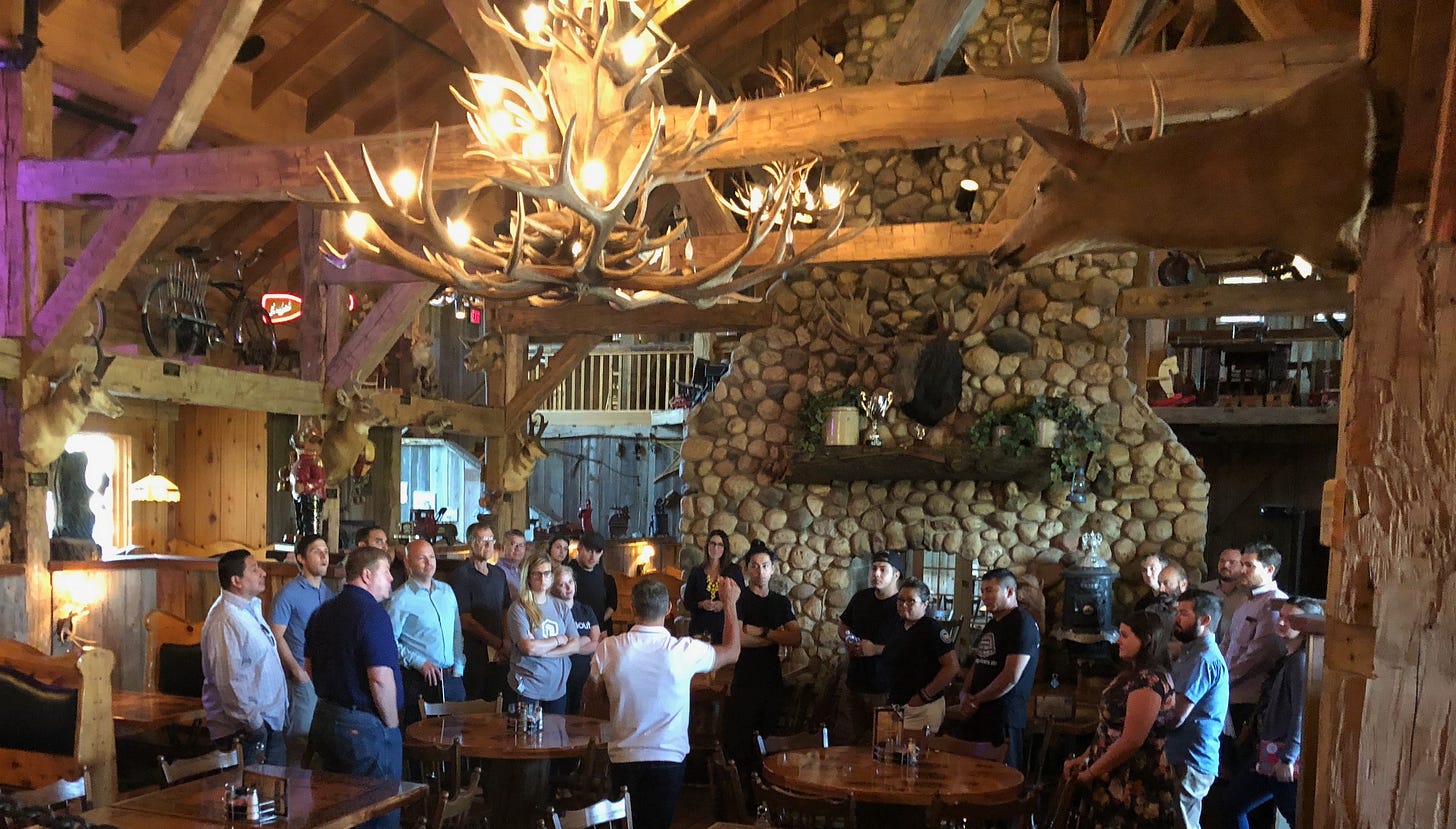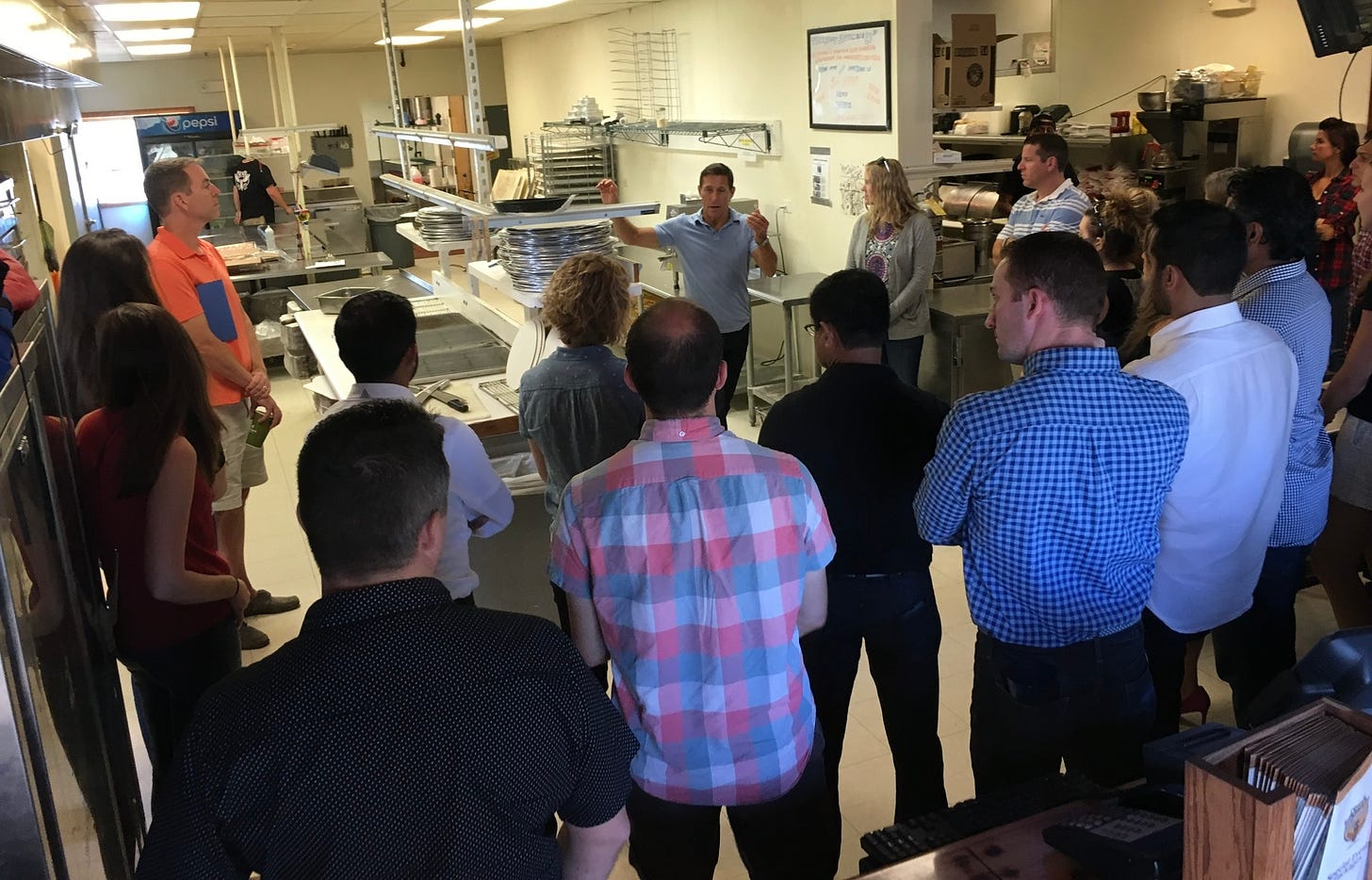Almost everyone is responsible in some way for building and following process. Whether for ourselves or for others to follow, process helps us be more efficient, accomplish goals, deliver consistency, and manage others’ expectations.
There are parents who design process for their children to follow, like making their beds, keeping their rooms clean, doing their homework, and helping with house chores. Those same parents often follow process in the kitchen, from dinner and baking recipes, to loading the dishwasher, to organizing the pantry. And many of those parents then teach their kids to follow those processes.
There are leaders who build process to follow for employees, vendors, customers, volunteers, managers, and supervisors. Managers must hire people effectively, bookkeepers must stay on track with finances, customers must know how to use the product or service, employees must know how to do their assigned work, and volunteers must know how to fulfill their roles.
There are writers, influencers, speakers, and artists who find that process helps them with their creative endeavors. They build outlines or sketches or experiments; try to discover the right days and times to do certain types of work; experiment with physical settings where their creativity flourishes; find prompts to begin the creative process; use software and spreadsheets to organize their ideas; turn to AI to do the mundane work; and rely on proven strategies to overcome obstacles like writer’s block when their creativity is stalled.
THE PROBLEM WITH PROCESS
I’ve been in the shoes of all three groups described, and have come to believe that a fundamental pain these responsible parties have is the lack of a standard to structure these processes. That’s what often drives a number of questions.
Where do you start? How general or specific do you make the process? How do you communicate them to others so they can follow them easily? How do you create a flexible process that allows for experimentation and iteration? How do you keep it simple yet capture the complexity that almost all process has?
Beyond these issues, the challenge for all process-setters is spending less time on the process itself so they, and others, can spend more on the actual work. And I believe that the simplest way to answer the above questions and make the best use of everyone’s time is by setting a standard and following it. One that is a process in itself.
The benefit of solving this problem with a standard is that it makes everyone’s job easier: the party who is responsible for building process and the party who is responsible for following it. And the benefits go further.
By setting such a standard, those responsible for building process then have a way to replicate the process-building process. In other words, by solving this problem, they create a replicable starting point that virtually anyone can follow. The standard itself becomes a virtuous cycle.
LEARNING FROM PIZZA
Years ago, I learned of a ridiculously simple standard to solve this problem. And it was at a pizza joint.
When I started my company, The Junto Institute, I was fortunate to be introduced to a man who changed my life and ultimately transformed our business. His name is Nick Sarillo, and he is the owner of Nick’s Pizza & Pub, a two-location restaurant in the far suburbs of Chicago.
When Nick invited me to visit one of his restaurants for the first time, I was blown away. As I pulled into the parking lot, I couldn’t believe that it was a 9,000+ square foot building…something I later started calling a “cathedral to pizza.”
After some small talk, Nick took me on a tour. He walked me through virtually every square foot: the waiting area, bar, lower-level dining room, upper-level loft dining space, kitchen, server galley, carryout counter, storage space, team meeting space, and offices. Nick also gave me a “tour” of how he and his team ran the business, and emphasized how the latter ran most of it, not him.
That’s because he had not only set a simple standard but, most importantly, implemented it across the board. I was so taken by the way in which Nick set up his business and its operations (I subsequently learned this was due to his collaboration with The Miick Companies) that I decided soon after that we would take Junto members on a field trip each year to Nick’s Pizza & Pub so they could learn about how to systemize operations. After all, everyones “gets” restaurants and pizza, and I believed it could help companies in any industry apply lessons learned in a simple way.
ART AND SCIENCE
The standard that was behind all the systems and processes at Nick’s Pizza & Pub included how they made pizzas (more to come on that), trained staff, made financial decisions, greeted customers, addressed difficult conversations, and so much more.
This standard is a tool known as “art and science,” and was an outcome of a longtime consulting relationship that Nick’s Pizza & Pub had with The Miick Companies (the latter holds a copyright and trademark for The Art and Science of Service and The Art and Science of Production).
This is how art and science was applied at Nick’s:
The science refers to the steps that everyone must follow for a particular process. These are non-negotiables…standards in their own right. One example was the process for greeting people as they walk in the door.
From what I recall, the science included steps like the following:
Eye contact
Smile
Verbal greeting
Mention of Nick’s Pizza
Ask what they want
Respond
The art refers to those steps that allow for personal freedom, creativity, and expression to fulfill the science. For example, making eye contact and smiling at someone are pretty straightforward and leave little room for personal creativity.
But when it comes to a verbal greeting, a mention of the restaurant’s name, and asking what the people want, an employee has freedom to fulfill that step with their own style and preferences. For example, they can say any of the following:
Welcome to Nick’s Pizza! How may I help you?
Good evening, thank you for coming to Nick’s Pizza. Are you dining in, taking out, or something else?
Hi there, thanks for joining us at Nick’s Pizza, what can I help you with?
As you can see, each of these fulfills science steps 3-5: verbal greeting, mention of Nick’s Pizza, ask what they want. But each example integrates different words, and perhaps tone of voice, that reflect an individual’s personal creativity.
This simple formula for developing a standard for others - art and science - was so impactful for our clients at The Junto Institute that one of them even referred to it during his graduation speech: “What I remember the most from Junto is that it takes 55 pieces of equally-spaced, nickel-sized sausage for a large pizza at Nick Sarillo’s restaurant.”
Our client was referring to the art and science that Nick’s used in the kitchen. When we took our participants there for a class on building a systematic operation, they learned that there was a standard number of toppings to be placed on each size of pizza, and that they had to be spaced in a certain way. That was the science.
If I recall correctly, though, Nick made clear that the pizza-maker had freedom to choose which direction to lay out the toppings and at what pace. That was the art.
And this model applied to everything in the company’s operation. It was so impactful for our own team that we decided to adopt the same approach for executing our leadership development program, a far less tangible and physical offering than pizza, yet one that benefited just the same.
SIMPLICITY AND BEAUTY
The beauty of “art and science” is that it’s a simple, intuitive, and flexible way to set standards for other people, especially when it comes to process.
Whether it’s showing children how to clean their room and make their bed, helping a customer understand how to use a product or service, or training an employee how to perform parts of their job, “art and science” can be used.
Of course, the same applies with ourselves. I have used “art and science” for my morning routine. There are so many things I like to do in the morning that I can’t do them all. So I’ve organized them into categories:
Reading/writing: book, Substack, journaling, standards articles
Reflection: meditation, hike/walk, journaling, spiritual reading
Movement: strength training, yoga, cycling, hike, walk
Learning: non-fiction reading, Substack
The four categories are my “science,” non-negotiable areas that I commit to doing every morning. The various options are my “art,” allowing me to have freedom to choose what I feel like that particular morning. I have this list in my note-taking app so that my own process for executing my morning routine requires little thought. It’s simple, intuitive, and flexible.
YOUR TURN
Give it a shot. Think about a real process that is relevant to your life or your work. Keep it simple, something that might only involve a handful of steps.
What are the non-negotiable steps or the science? Can you use single words or short phrases? Then, what is the art? Where do you have opportunities for personal freedom, creativity, and expression?
I’d love to hear what this process feels like for you when you try it. And if you have fun with it, treat yourself to a slice of pizza, and send your gratitude to my friends, Nick Sarillo and Rudy Miick, for not just the experience but the idea.
“The Art and Science of Service” and “The Art and Science of Production” are copyrights and trademarks of The Miick Companies. To learn more about how your organization can build better values, standards, and processes with this - and many other tools of theirs - please contact Rudy Miick, Founder and President, (303) 413-0400, or visit their website.







Raman, THANKS for your offering here of Nick's Pizza & Pub as a real life example of business and personal Standards put into action!
Thank you too for acknowledging, for naming the Miick Companies for the work I/we did with Nick. What a great experience when a client, colleague or friend makes the decision to be choiceful and conscious. As you suggest, the result is consistently potent. Performance shifts, lives shift, and for all involved currency, that is, real dollars show up.
1. You are correct this choice of values or standards as you name them is simple, not easy.
2. In the case of Nick's, there are MANY tools in place, each and all supported by definitive, actionable standards (at Nick's called Values).
3. Thanks to those standards and sense of Purpose, behavioral choices show up each shift and every day at Nick's!
His is a magical space! The doors are even named the magic doors of Nick's, because the culture is SO unique, SO solid, so gracious, and literally full of love.
4. Thanks also for naming our work with the Art & Science of Service and Production.
You are spot on in what you shared about this model. The science is really the mechanics, each brand touch point defined within each position and for every guest. At the same time, the Art allows each team member to be their own person, no script to follow, however information shared in an authentic way that provides radically consistent guest experience.
What I love and appreciate with all the points you've made about Standards and the application thereof is this: There is a consistent road map that provides a unique opportunity for anyone or any company choosing to make the journey!
Last, about Nick's! It's been one of the great restaurant experiences, business cultures on the globe! What looks like a pizza joint has really been a leadership academy, by Nick's own admission.
Thank you for sharing Nick's story as an example of Standards in action! My best to you and your team, all those following!
Sincerely,
Rudy Miick, Founder
The Miick Companies
720-641-7565